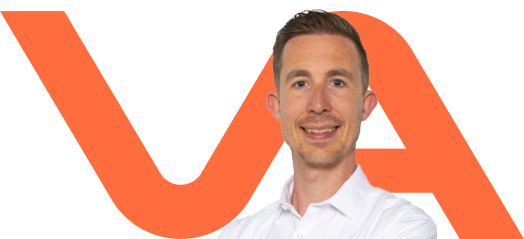Structured Light Technology: A High-Precision Method for 3D Imaging
In the world of 3D scanning, capturing precise information about the shape and geometry of objects is critical. From manufacturing and quality inspection to healthcare and robotics, accurate 3D data enables better decision-making and automation.

One of the most widely used techniques for close-range 3D scanning is the structured light camera. Known for its high precision, it has become a go-to solution for applications requiring detailed surface measurements. But how does it work, and what are its strengths and limitations?
Table of contents
The Principle of Structured Light
A structured light camera creates 3D data by projecting a structured pattern (stripes, dots, or grids) onto an object. The system then captures how the pattern deforms across the surface and reconstructs the object in 3D.
The process involves four key steps:
- Projection: A light source (often LED or laser) emits a structured pattern across the object.
- Image Capture: One or more cameras record how the pattern deforms when it strikes the surface.
- Pattern Analysis: Software compares the distorted pattern to the original reference.
- Triangulation and Reconstruction: Using triangulation, the system calculates the 3D coordinates of each visible point, generating a point cloud or depth map.
Because the projected light interacts differently depending on surface geometry, the resulting dataset delivers highly detailed 3D imaging.
Strengths of Structured Light Cameras in 3D
Structured light technology is valued for its accuracy and reliability in 3D scanning and inspection. Some of the main advantages include high accuracy, full-field scanning, detailed surface capture, and versatile use cases.
High Accuracy
One of the main strengths of structured light cameras is their ability to achieve sub-millimeter accuracy in 3D scanning. This level of precision makes them ideal for industries where tolerances are extremely tight, such as aerospace, automotive, and medical device manufacturing. Even the smallest deviations in measurements can be detected, ensuring reliable quality control.
Full-Field Scanning
Structured light cameras capture the entire surface of an object in a single scan, rather than recording individual points or lines. This ability to collect full-field data speeds up the inspection process and produces comprehensive 3D datasets that give a complete picture of the object’s geometry.
Detailed Surface Capture
Structured light cameras can detect very small surface irregularities that might be overlooked by other imaging technologies. This makes them particularly effective for applications such as defect detection, where capturing tiny scratches, dents, or warping is critical.
Versatile Use Cases
Structured light systems are highly versatile, capable of working across a wide variety of object shapes and sizes. In controlled environments such as laboratories, production facilities, or healthcare settings, they can deliver reliable results across many use cases.
Limitations of Structured Light Cameras in 3D Vision
Despite their strengths, structured light cameras also face challenges in 3D vision applications:
- Reflective and Transparent Surfaces
Scanning reflective or transparent materials is one of the main challenges for structured light cameras. Polished metals, glass, and plastics can distort or scatter the projected pattern, leading to incomplete or noisy results. Applying matte coatings, using polarizing filters, or combining structured light with other imaging methods can help overcome this issue.
- Line-of-Sight Dependency
Structured light systems require the projected pattern to be visible to the camera. Shadowed areas, recesses, or occlusions often cause gaps in scans. Multi-camera setups, rotating the object, or advanced reconstruction algorithms are common strategies to improve coverage.
- Sensitivity to Ambient Lighting
Bright light sources, especially direct sunlight, can interfere with the projected patterns and reduce accuracy. Structured light works best in controlled lighting conditions, though shielding the sensor or adjusting illumination can improve reliability in more challenging environments.
- Calibration requirements
Accurate calibration between the projector and cameras is essential. Any drift or misalignment reduces measurement quality and may lead to errors in inspection or reconstruction. Regular calibration with reference targets or using self-calibrating systems, ensures consistent performance.
- Processing Demands
High-resolution scans produce large datasets, which require powerful computing resources to process effectively. Without optimization, this can slow performance or limit real-time use. GPU acceleration, edge computing, and efficient algorithms help structured light systems balance speed with accuracy.
Final Insights on Structured Light Camera in 3D Imaging
A structured light camera is one of the most powerful tools in modern 3D vision and 3D scanning. By projecting light patterns and analyzing their deformation, these systems can capture highly detailed, accurate 3D data in a fast and non-contact way. Their strengths ranging from sub-millimeter accuracy to full-field surface capture, make them especially valuable in industries such as manufacturing, healthcare, and research, where precision and reliability are essential.
Like any technology, structured light has certain practical considerations, such as the need for calibration and controlled lighting. Yet with the right set up, it consistently delivers high-quality results across a wide range of applications. As the demand for advanced inspection, automation, and digital modeling continues to grow, structured light cameras will remain a cornerstone of 3D imaging solutions.
FAQ: Structured Light Cameras
Looking to integrate high-precision 3D scanning into your application?
At VA Imaging, we provide industrial 3D vision solutions for inspection, robotics, manufacturing, and custom engineering projects. Whether you need sub-millimeter accuracy, fast full-field measurement, or reliable inline quality control, our experts can guide you to the ideal 3D imaging setup.
Get in touch with our team to discuss your 3D vision requirements and find the best solution for your application.
















































